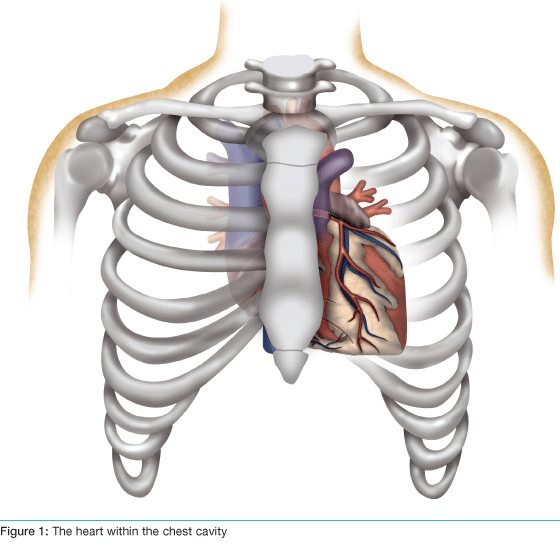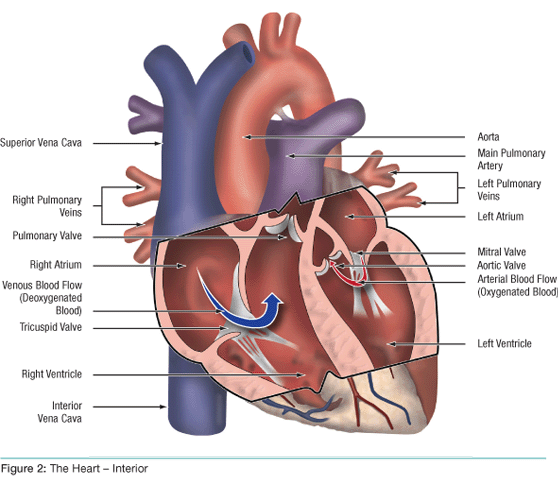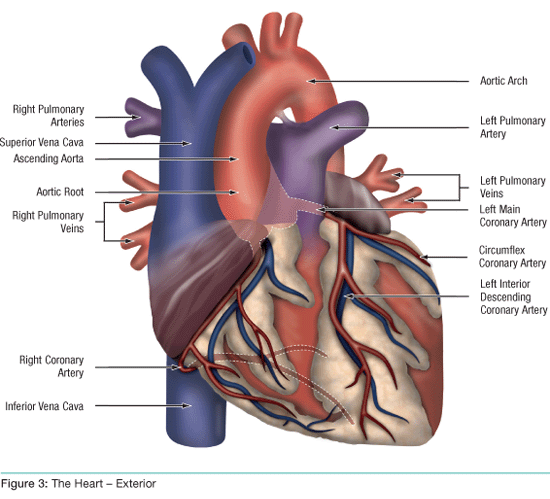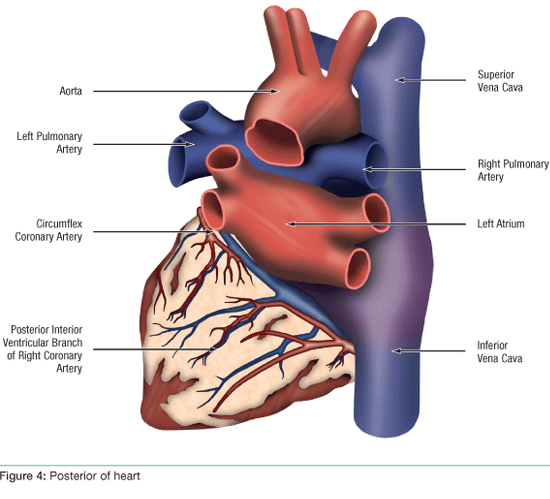The Heart
The Heart:
What is Does and How it Works
The heart is a hollow, muscular organ located between the lungs and underneath the breastbone. A muscular wall divides the heart into two sides – the right side and the left side. Each side has two chambers. The two upper chambers of the heart are called the atria.
The atria are the filling chambers. They receive blood returning from the body (right atrium) and the lungs (left atrium). The two lower chambers are called the ventricles. These are the pumping chambers of the heart. The right ventricle pumps blood to the lungs. The left ventricle pumps blood to the rest of the body.
The atria and the ventricles are separated by valves, which allow the blood to flow through the heart in one direction and prevent back flow of blood. The wall of the heart is made up of three layers. The outer layer is called the epicardium. The middle layer is the actual heart muscle and is called the myocardium. The inner layer of the heart is called the endocardium. The heart is contained within a sac called the pericardium.

The sole purpose of the heart is to pump blood to and from the rest of the body. The
right side of the heart pumps blood without oxygen to the lungs where oxygen is
picked up by the red blood cells. The blood then returns to the left side of the heart
from where it is pumped to the organs and muscles of the body, including the heart
itself. (Figure 2).

Blood returns to the heart from the body via the superior and inferior vena cava(e). Blood
travels through the right side of the heart to the lungs via the pulmonary arteries. There
the red cells in the blood pick up oxygen. Blood returns to the left side of the heart from
the lungs via the pulmonary veins. Once in the left side of the heart, the blood now rich in
oxygen is pumped through the aortic valve to the aorta, the big blood vessel leading out
of the heart and thence to the rest of the body, including the heart itself.
In order to propel the blood, the heart must contract and relax some 60 to 100 times every minute. Exercise requires the heart to work harder. It does so by an increase in the heart rate (beats per minute) and increasing the amount of blood pumped from the heart with every heartbeat.
In order for the heart muscle to continuously pump, it must be well supplied with oxygen-rich blood. The heart supplies itself with this blood first, before sending blood to the rest of the body. The heart muscle is supplied with blood by the coronary arteries, the hearts own blood vessels. (See Figure 3 for a picture of the right and left coronary arteries and how they supply the heart with blood). The coronary arteries are located on the surface
of the heart. The left main coronary artery divides into the left anterior descending coronary and the circumflex coronary. The left anterior descending coronary supplies blood to the front wall of the heart. The circumflex coronary artery supplies blood to the side wall of the heart. A third artery, the right coronary artery, supplies blood to the bottom wall of the heart. All the coronary artery branches send many tiny blood vessels deep into the heart muscle to supply oxygen rich blood to all layers of the heart. Without this blood supply
the heart muscle could not function and blockages of the coronary arteries can lead to
a heart attack.

Exactly what triggers cholesterol plaque to rupture leading to blockage is unknown. Contributing factors include excess physical exertion, mental stress, anger, cigarette smoking, coffee and alcohol consumption, sexual activity and the adrenaline surge that occurs in the early morning on awakening. The development of symptoms depends partly on how well other coronary arteries supply the heart muscle beyond the blocked blood vessel. Internal bypasses via small (collateral) vessels may protect the heart muscle from damage due to narrowed or blocked coronary arteries.

|